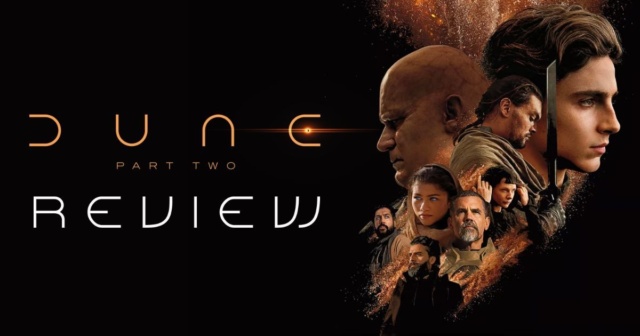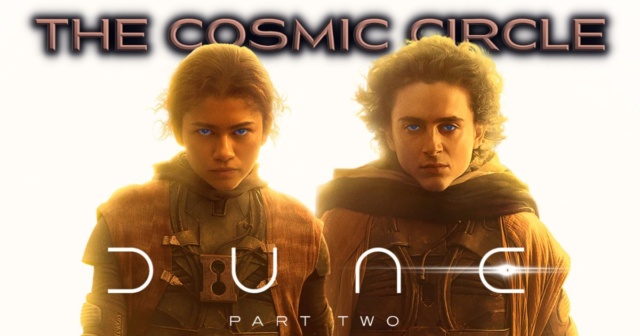‘Dune: Part Two’ Review: Denis Villeneuve’s Fully Realized Childhood Dream

The opening moments of Denis Villeneuve’s Dune: Part Two is a distinct departure from the cold and mechanic action of Dune: Part One, as Paul Atreides (Timothée Chalamet) and the Fremen, lead an attack on Harkonnen scouts as they are about to reach Sietch Tabr. The action doesn’t feel as stilted as in Villeneuve’s previous works, which, while beautifully shot, had no sense of kinetic energy, showcasing his massive inexperience while transitioning from small-scale dramas in Québec to massive Hollywood productions.
In its opening scene, Villeneuve shows his growth as a filmmaker in a magisterial way: the action moves at a pace never seen before throughout his filmography, and the precise kills against the Harkonnens are cathartic and exciting. Coupled with Greig Fraser’s staggering IMAX photography, it didn’t take long for me to be enamored with the world of Arrakis. This wasn’t the case in its first installment.
In Part One, Villeneuve seemed so busy bludgeoning audiences to the head with extreme exposition that he forgot to make a good movie. None of the characters seemed interesting enough to invest ourselves in a constantly moving story whose sole purpose is to set up Part Two.
Regardless of its staggering visuals (and there were certainly many interesting set pieces in that film), there isn’t anything remotely compelling about watching a 155-minute-long trailer for a better, and more complete, vision of Frank Herbert’s allegedly “unadaptable” sci-fi novel. With Dune: Part Two, Villeneuve shuts down all noise that the book is unadaptable and delivers a complete, visionary piece of work. One that his career has been building towards since childhood.
[Warning: The following article contains major spoilers for Dune: Part Two and Frank Herbert’s Dune: Messiah.]
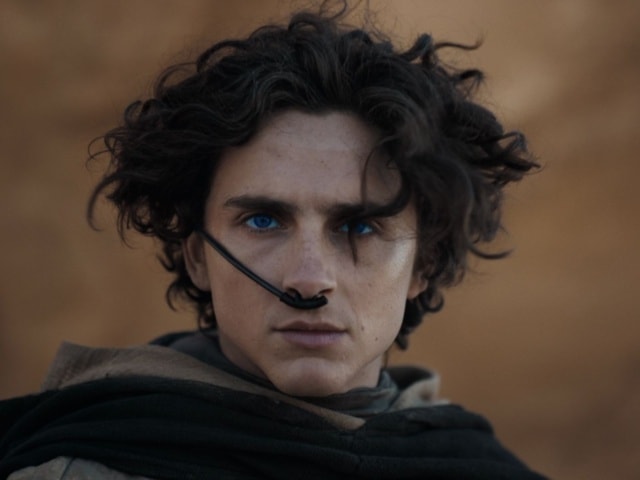
Dune: Part Two plot summary
Part Two immediately forgoes large chunks of exposition to favor a deeply moving and spiritually challenging story on the dangers of fanaticism and believing in prophecy. This challenge occurs early in the movie, as Fremen leader Stilgar (Javier Bardem) foretells his tribe that Paul and his mother, Lady Jessica (Rebecca Ferguson), will bring prosperity to Arrakis and lead all Fremen to paradise.
Stilgar believes Paul is the Lisan al Gaib and trains him in the ways of the Fremen, from camping out in a tent to riding a sandworm, where he adopts the name Paul Muad’Dib Usul. However, Paul doesn’t think he is the One, with his visions beginning to blur out differently. He sees possible futures of the world of Arrakis burning down, with Chani (Zendaya) dying at his hands. Meanwhile, Lady Jessica’s expecting daughter, Alia (Anya Taylor-Joy), communicates with her mother through the womb, stating that Paul is not prepared for what will happen.
Meanwhile, Emperor Shaddam IV (Christopher Walken) intensifies his Sardaukar troops to eliminate Paul before he eventually becomes the prophet, as foretold by the Fremen. The Reverend Mother Gaius Helen Mohiam (Charlotte Rampling) sends Lady Margot Fenrig (an underused Léa Seydoux) to Giedi Prime. There, Feyd-Rautha Harkonnen (Austin Butler, devilishly psychotic but will never top Sting in David Lynch’s 1984 version of Dune) is set to take over Glossu Rabban’s (Dave Bautista) operation in Arrakeen. This, after Baron Vladimir’s (Stellan Skarsgård) nephew failed to eliminate Muad’Dib.
Dune: Part Two lets its narrative flow
Like Dune: Part One, there are many moving parts, but none feel bogged down by endless exposition bludgeoned at the audience’s expense. Perhaps there are a few sequences that feel inherently expository and only serve to set up the next chapter in the franchise, Dune: Messiah. They’re more emotionally cogent and integral to the development of Paul than in the first film, which set up a plethora of images for Part Two with little to no emotional payoff in the immediate.
Through framing devices like the Water of Life, Villeneuve shows Paul’s transformation from a doe-eyed boy to a man who takes control of the narrative; to bring down House Harkonnen and vow revenge on the people who took his father’s (Oscar Isaac) life.
None of the expository scenes feel like exposition jargon, but they are essential in understanding Paul’s moral conflict and his relationship with the Fremen. The dialogue feels more natural, with the actors seemingly having more flexibility to work with this time around.
This makes Chalamet’s take on Paul Atreides far more riveting than in the first film, which amounted to an emotionless, exposition-spewing robot. Here, his inner and outer conflict is fully realized. He never accepts himself as the Lisan al Gaib, even while acting like it, as it is the only way for him to gain the trust of the Fremen and the fundamentalists.
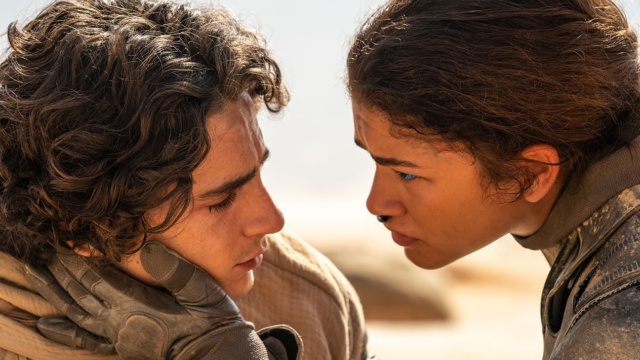
That manipulation seems dangerous to the eyes of Chani, who has made it clear she entirely rejects the Fremen’s prophecy and Paul’s actions, and becomes more impulsive as the film progresses. While Part One set up a rather dull, one-note relationship between Paul and Chani, their chemistry here is far more complex. Particularly during a scene in which Paul confesses to the love he has towards her, only to ask for Princess Irulan’s (Florence Pugh) hand in marriage a moment later, confusing Chani to the point of feeling betrayed.
This quick emotional shift in Zendaya’s facial expressions marks a singular turning point in her career, with a defining performance that will be remembered for generations. Finally, Villeneuve understands Zendaya‘s potential as an actor and doesn’t let it go to waste. In fact, it’s perhaps the most revelatory aspect of the film, and Denis Villeneuve‘s Hollywood career.
Timothée Chalamet nails Paul’s transformation to Muad’Dib
This shift is also deeply felt with Chalamet’s turn as Muad’Dib, whose messianic impulses are more terrifying than his vision of a war in his name in the first film. There isn’t a single moment in which Villeneuve paints Paul’s rise as the Lisan al Gaib in a “crowd-pleasing” fashion, hammering home Herbert’s original intent that Paul Atreides is not a hero.
Consider the scene where he rallies the fundamentalist troops and says, “Long live the fighters!” It immediately reads as a crowd-pleasing, heroic moment in Paul’s ascension as the Lisan al Gaib. However, it predates his downfall in Messiah and sets up something far more sinister that most audience members won’t read until the very end when his transformation is fully complete.
Villeneuve never treats him as a hero, making the film’s final battle less “spectacular” and more bone-chilling. The image of a massive explosion on Shaddam IV’s ship isn’t supposed to be rousing or “epic” (which we’ll talk about in a minute) but should instead send chills down your spine. It foreshadows Paul’s even more tormented quest in Dune: Messiah, which will promise to be far more divisive than Villeneuve’s overwhelmingly positive success with his adaptations of Dune.
“Epic” is the keyword in film criticism circles when discussing Dune: Part Two, especially when crafting early reactions to the movie. Of course, Oscar winner Patrice Vermette’s evocative production design of a black-and-white Giedi Prime fighting arena, coupled with Fraser’s greatest-ever work as director of photography as Feyd-Rautha easily kills three captured members of House Atreides, certainly lends itself as epic. Its most grandiose set pieces are treated with massive scale and scope.
A bravura action sequence involving a frightened Rabban as he experiences the might of Muad’Dib or another when Gurney Halleck (Josh Brolin) is surprised by the Fremen, has the greatest sense of movement in Villeneuve’s entire career. Side note: Dave Bautista’s performance is one of the film’s greatest achievements, hiding massive amounts of fear and vulnerability through sudden bursts of strong emotions and rage.
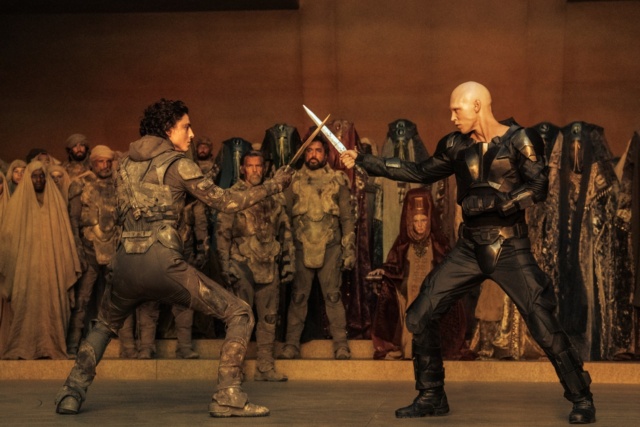
Or how about the final knife fight between Feyd-Rautha and Paul? Compared to the final knife fight between Paul and Jamis (Babs Olusanmokun), the difference in action choreography is night and day. While that fight scene was particularly effective due to its rhythm, the moves take priority in the second installment, and the physically demanding acting from both Chalamet and Butler elevates the scene with even bigger stakes.
But there’s nothing “epic” about seeing the rise of a genocidal maniac who is about to go on a Holy War between the Great Houses. This will result in a jihad ordered by Paul himself in Messiah. When I see people saying the “fighters” sequence has the “juice” or that the movie is “epic,” they seemingly forget that Paul isn’t the hero of the story, and none of what’s on screen is inherently epic.
Yes, it looks grand, and its painterly visuals are out of this world on an IMAX screen. But the film is bleak, and it never hides its intentions as soon as Paul turns into something much more sinister than in the first installment. It’s almost jarring, but that’s what Frank Herbert initially wrote Paul Atreides as. Not as a hero, but as a deeply flawed, broken character whose seemingly “heroic” actions as a messianic figure will result in his fall.
Denis Villeneuve directs each scene with kinetic precision
Beyond this, however, it’s rare for a major Hollywood blockbuster to have action produced at this scale that feels alive: the precision of the fight seems second fiddle to the kinetics offered by Villeneuve’s expert sense of image and sound-making. But it’s also impressive to see how tactile and unique the fight scenes are compared to its first installment.
Villeneuve lays it out there in a way that’s massively distinct to a seasoned blockbuster filmmaker like James Cameron and Peter Jackson. It would be a horrible thing to compare it to The Lord of the Rings because they are not the same. But it’s safe to say that Villeneuve has entered the status of a blockbuster auteur in the vein of filmmakers like Jackson and Cameron, with a singular authorial vision driving the scale and scope of their respective films.
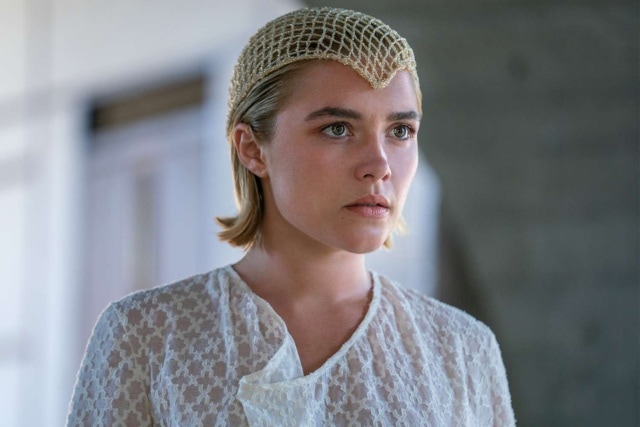
In terms of sound design, Part Two is also leaps and bounds ahead of the first. While the first film’s sound design blared loud bagpipes with even louder Sardaukar chants, the palette in Part Two is far clearer: each sound has a specific tonality and enhances our journey into the film’s multiple, almost overwhelming worlds.
Consider the opening scene, which blends Hans Zimmer’s rousing score with the Harkonnen communicating as they slowly move into Arrakis, looking for the Thumper. It isn’t so much a cacophony but an almost perfect symbiosis with the opulent IMAX images produced by Fraser, a more restrained but effective score from Zimmer, and its inventive sound design. Each works to feed the other, rather than working at the same time to disorient the viewer.
The fact that Villeneuve fixed many of Dune: Part One’s issues for a more complete and aesthetically riveting experience for Part Two cements my respect as someone who wants more from his viewers. It’s even more inspiring for a Montrealer like me to see someone rise the ladder as a UQAM graduate, from winning La Course Destination Monde in 1991 to being one of the most acclaimed auteurs working today.
To gain this much success rarely happens in Québec cinema, whose biggest auteurs are only known in the province and rarely cross over internationally. However, there seems to be a shift, with Monia Chokri recently beating Wim Wenders, Äki Kaurismaki, Marco Bellocchio, and Christopher Nolan at the Césars for the Best Foreign Language Film Award with Simple Comme Sylvain.
With Villeneuve on top of the world in Hollywood; delivering a true sci-fi spectacle that, in all honesty, shouldn’t have worked; should be a sign to inspire more emerging talent from our province to follow their aspirations and be as, if not more, successful than Villeneuve, who paved the way for this to happen with his friend, the late Jean-Marc Vallée.
Villeneuve always returns to Montreal to premiere his movies, to which he did on February 28th. Unfortunately, Timothée Chalamet, who was scheduled to attend, had to bow out due to illness, but the feeling was palpable in the auditoriums.
Former stars of Villeneuve‘s films, creatives, and his family (including his parents) were yelling at the rooftops, “Denis! Denis! Denis! Denis!” as he was walking the Cinéma Banque Scotia’s sand-covered carpet. This isn’t only to cheer for his current, almost overwhelming success in Hollywood but for his future dreams to come true as he hopes to make an even bigger mark as an auteur with his subsequent, always-engaging work.
With a miracle like Dune: Part Two, Denis Villeneuve makes us dream about our own personal wishes and shows us that they are much stronger than we think. After all, they’re messages from the deep.
Dune: Part Two is now playing in cinemas. Do you plan on watching it? Let us know on social media @mycosmiccircus or in The Cosmic Circus Discord!
Dune: Part Two Review: A Cinematic Miracle
Dune: Part Two Podcast (Cosmic Circle Ep. 51)

